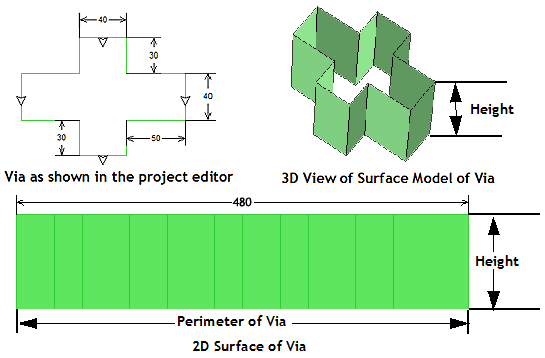The surface via loss model treats the via as an infinitely thin hollow tube giving it a 2D surface as pictured below. The complex sheet impedance is applied to this 2D surface.

This method allows you to enter three values: RDC, RRF and XDC. The first parameter, RDC, determines loss at low frequency (where the conductor is much thinner than the skin depth).
The equation for RDC is:

where
s is the bulk conductivity of via metal in Siemens/meter
t is the metalization thickness in meters
The second parameter is the skin effect coefficient, RRF. At frequencies above DC, em uses the same surface impedance equation used by Sonnet for planar metal. This equation includes the Untapped, resulting in a smooth transition from DC to high frequencies. The equation for RRF is

where s is the bulk conductivity in Siemens/meter
m = m0 * mr
mr = relative permeability of your metal, which is typically 1.0 for most metal materials. Magnetic materials, such as nickel, have a mr greater than 1 and therefore significantly increase the skin depth.
The third parameter is Xdc, the surface reactance, and is normally set to zero. This parameter is provided for advanced users who want to customize the surface impedance of the metal.